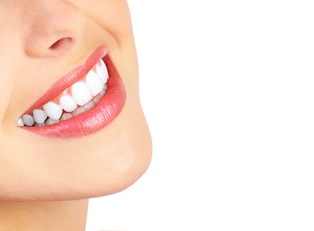If you’re considering having your teeth whitened, you need to begin by having a conversation with your dentist. Even though the chances are good that you’ll be an applicable candidate for the procedure, it’s best to go into the process with as much information as possible and with the blessing of a qualified expert. Here are some topics that it’s important to address when you go to speak with your dentist about teeth whitening.
Options
Over the years, several different teeth whitening options have been developed. In-office treatments are performed in a dentist's office and usually feature higher peroxide concentrations that over-the-counter options. In-office treatments can include light-accelerated bleaching (sometimes commonly called laser teeth whitening), internal bleaching for teeth featuring root canals, and nanoparticle catalysts allowing for lower concentrations.
At-home whitening methods now include an array of products from tooth whitening toothpastes and mouthwashes to whitening strips and trays. Some at-home teeth bleaching methods may be similar to laser teeth whitening by including a small LED activator light with whitening trays; however, the concentration of peroxide is less in whitening strips than in-office treatments. Ask your dentist about all the choices you have available for teeth whitening because chances are there will be at least one or two that are a better fit for you than the others.
Cost
Since there are several options when it comes to teeth whitening, it’s safe to assume that they carry different price tags. If you have stains from a root canal, for example, internal bleachings will cost more than traditional light-accelerated (or laser) teeth whitening methods. Your dentist will be able to explain which method will work best for your whitening goals based on how much money you have to spend on the procedure. Keep in mind that professional treatments can range anywhere from $500 to upwards of $1000, and even trays and whitening strips can be pricey as well.
Risks
While teeth whitening is a relatively risk-free procedure, there’s still a chance you may have an adverse reaction. However, it’s often easy to predict which patients will have problems with the process based on their current oral health. In-office procedures also typically feature a protective layer for gums and soft tissues created by curing. If you have particularly sensitive teeth, you may not be inclined to use the less accurate at-home methods. Your dentist can address these risks and help you determine whether or not you should proceed in spite of them.
Expectations
Many people overestimate what teeth whitening strips can do for their smile. Even though it is possible to see dramatic results with treatment, they don’t necessarily occur for every patient. Though you may be using at-home laser teeth whitening products that feel like professional procedures, over-the-counter teeth bleaching agents aren't typically as potent as those obtained by licensed dental clinics. Additionally, whitening pastes and mouthwashes typically don't include bleaching agents. Rather, they include abrasive agents such as silica or alumina. These small compounds only scour the outer layer of teeth and do not affect deeper layers like more concentrated peroxide-based bleaches. Talk with your dentist about your expectations going into the process so that they can help you determine if teeth whitening can help you in the ways you think it will.



